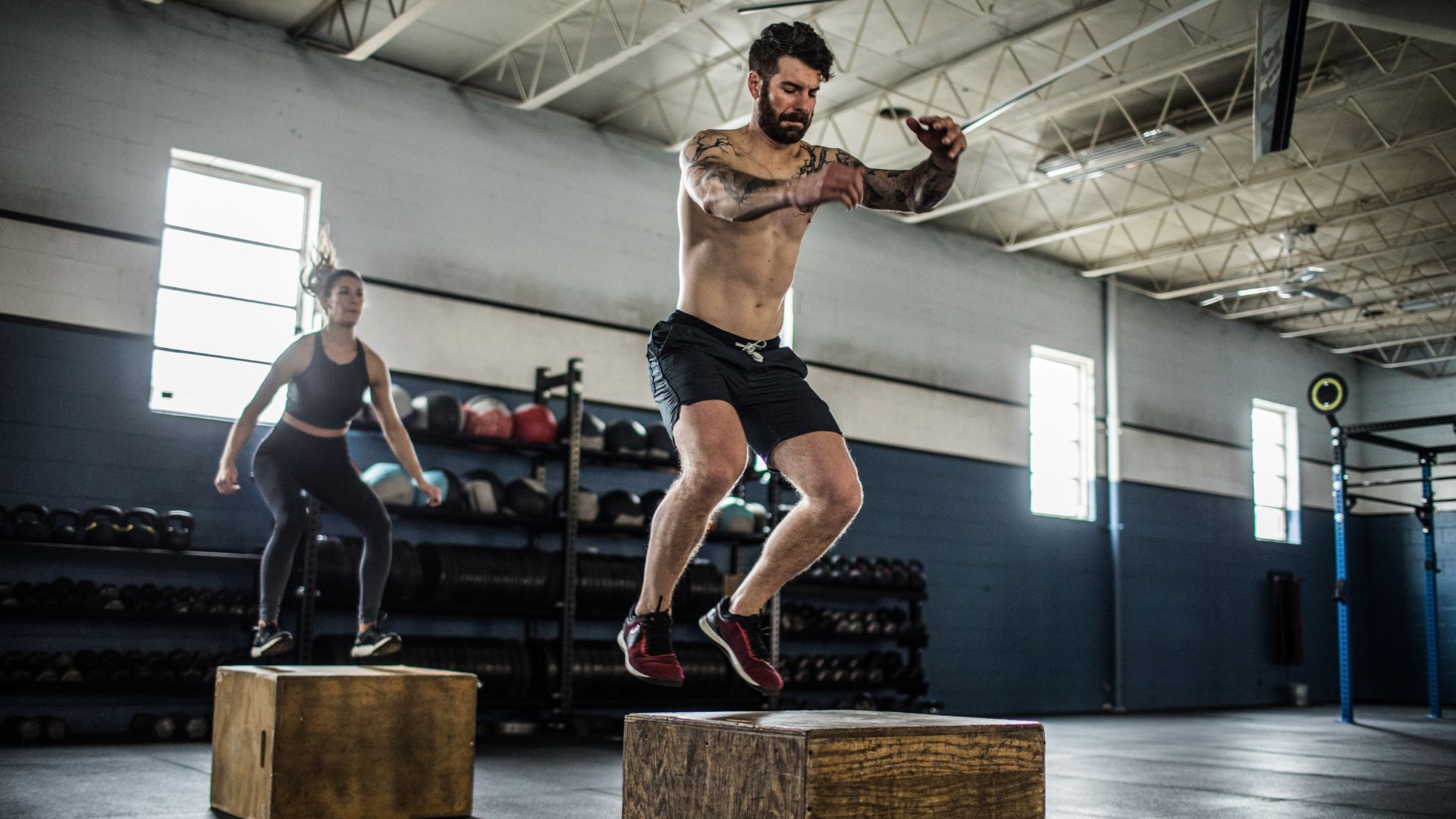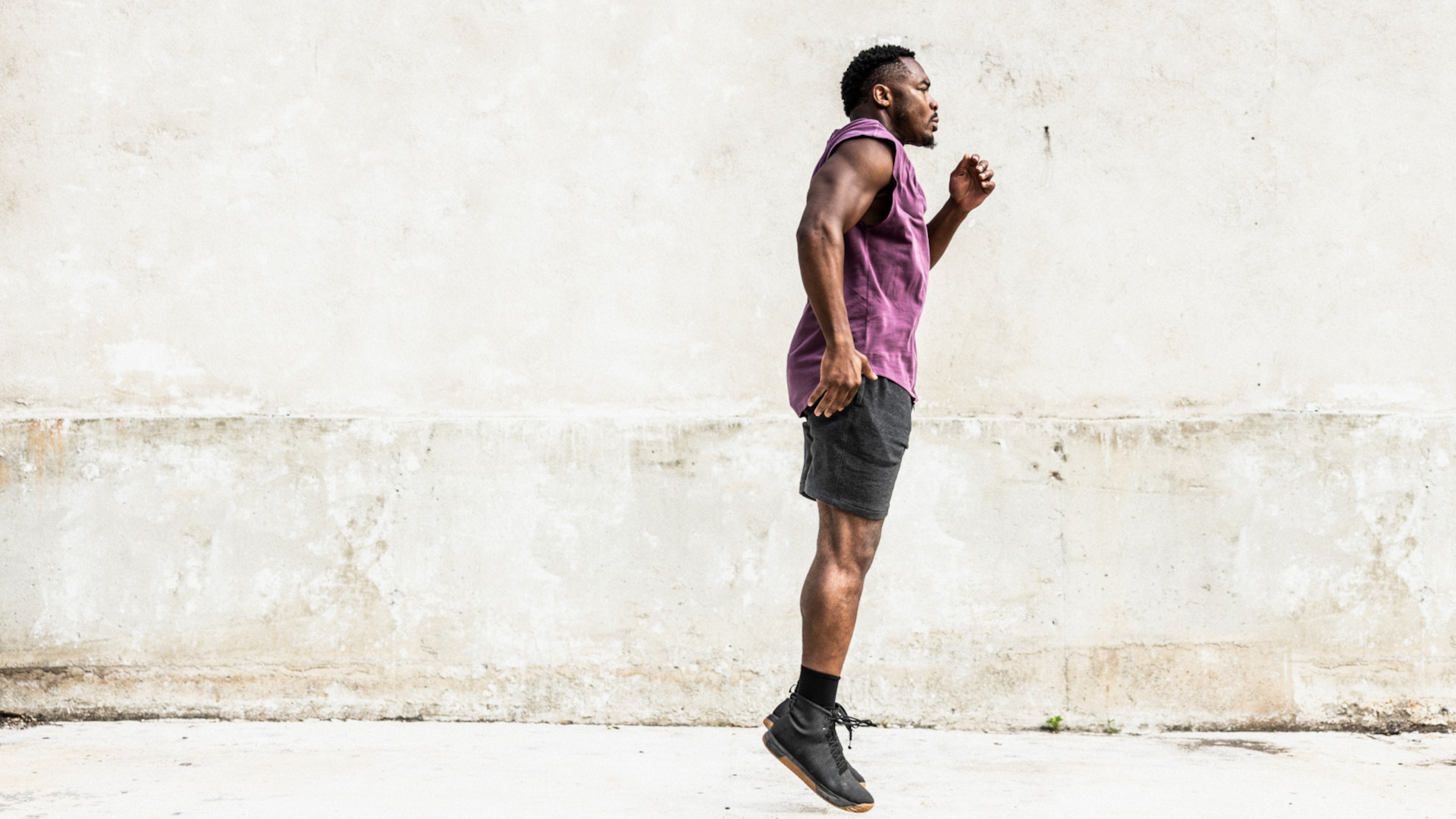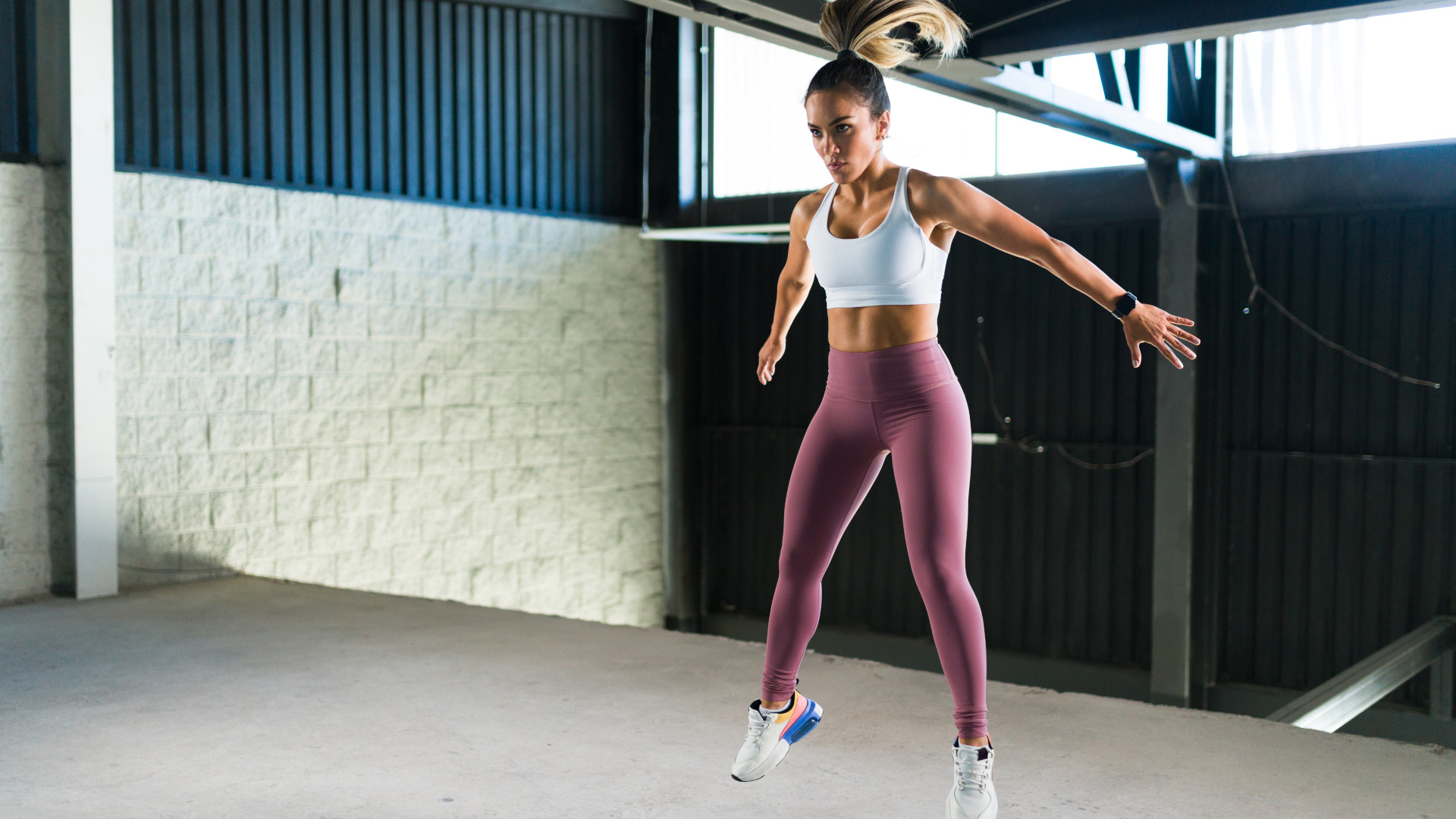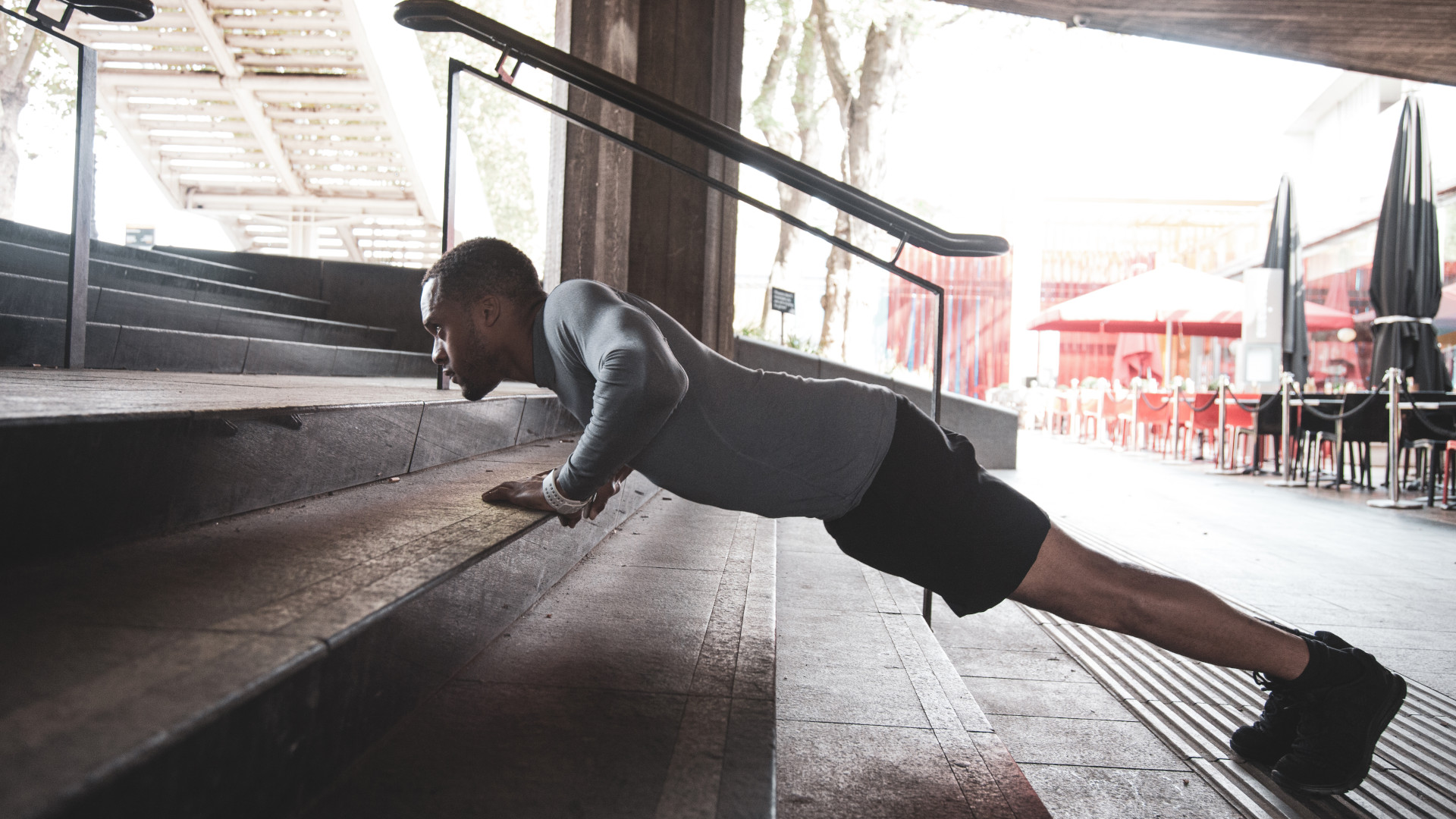

If you’re looking to up the intensity of your workouts and burn some serious calories, then it may be time to incorporate some plyometric exercises into your training. “Plyometric exercises involve explosive movements that rely on the stretch-shortening cycle of muscles such as jumps, hops, bounds, and skips,” says Mitch Raynsford ASCC – Lead Physical Performance Coach at P3RFORM. “They aim to improve muscle power, speed and overall athletic performance.
You may have actually already been doing some plyometric exercises without even realising, like jumping squats or burpees. They’re high intensity bodyweight movements, that can even help aid weight loss by burning a lot of calories and build up your endurance. However, their purpose is for improved performance. You don't need to go to a gym to do them either, as many of these movements can be done at home.
Benefits of plyometric exercises
As well as the few we’ve mentioned already, Mitch says plyometric exercises can also improve bone health, as they can contribute to better bone density and muscle strength, as they “strengthen the muscles and connective tissues involved in explosive movements”. If you do any types of training that involve explosive movements too (think running, basketball etc), then incorporating plyometrics into your training regime can help improve your performance. For example, if you're a sprinter, they can help improve your running speed.

How to incorporate plyometric exercises into your training
If you've never done these type of exercises before, then the key is to definitely do it gradually. “Start with low-intensity plyometrics and gradually increase the intensity and complexity as your strength and conditioning improve," says Mitch. "Adding them into an extended warm up is a great way to introduce these to your current training regime without overtraining.” He also adds to make sure you do a thorough warm up, so that your joints and muscles are prepared for the high-intensity of these exercises. As well as a good warm down too.
They're also an exercise you shouldn't do all the time either, especially if it's your first time. "Beginners may start with one session per week or even just in the warm up and progress to two to three sessions weekly as they adapt," says Mitch.
Are plyometric exercises safe for everyone?
The simple answer is no. Despite being beneficial, plyometric exercises to have a higher risk of injury as they are high impact, which is why it's key to nail the basic movements first and get your form on point. "If you have a low training age, I would recommend you work on the form of controlled resistance based training first or look to bring low level plyos into a short warm up to start with," says Mitch. Individuals with a history of joint issues, recent injuries, or low fitness levels should also exercise caution, as well as those who are pregnant or who suffer from cardiovascular conditions. If you're not sure whether plyometric exercises are suitable for you then contact a healthcare professional or a qualified fitness trainer before adding them into your training.

Four plyometric exercises you can do at home
As we mentioned earlier, plyometric exercises don't require any home gym equipment and are a great bodyweight exercise. Here's Mitch's top five that you can incorporate into your warm-ups, workout, or even create your own HIIT routine with.
Sign up to the T3 newsletter for smarter living straight to your inbox
Get all the latest news, reviews, deals and buying guides on gorgeous tech, home and active products from the T3 experts
1. Pogo jumps
Pogo jumps are quick, continuous jumps landing on the balls of your feet that develop lower leg strength
To do:
- Stand with your feet close together
- Keep your upper body straight with a slight forward lean from your ankles
- Bend your knees slightly
- Begin a rapid up-and-down bouncing motion on the balls of your feet, using your calf muscles
- As you land, think about ‘slapping’ the floor and pointing the toes to the sky each rep as you jump
2. Incline explosive press-up

"This bodyweight exercise that targets the upper body, specifically the chest, shoulders, and triceps," says Mitch. "It adds an explosive element to the standard push-up, enhancing the rate of force development."
To do:
- Assume a push-up position with your hands placed on an elevated surface, such as a bench or your sofa box
- Keep your body in a straight line from head to heels
- Lower your chest toward the elevated surface, bending your elbows
- Explosively push your body away from the surface, applying enough force to get your hands off the surface and into the air
- As you push up, your upper body should leave the surface momentarily
- Land softly with your hands back on the elevated surface
3. Hop and hold
Not only does this enhance lower body strength, but it's a great exercise to challenge your core and stability too.
- Start by standing on one foot with a slight bend in the knee
- Hop forward or sideways, landing on the same foot
- As you land, immediately hold the position for a few seconds, maintaining your balance
- Focus on keeping an erect posture with your chest up and shoulders back
- Perform the exercise for the desired number of repetitions on each leg, alternating between legs as you go
4. Counter movement jump

If you want to work on explosive leg power, then this exercise is brilliant. "It's a foundational exercise for developing jumping ability and is often used by athletes in sports like basketball, volleyball, and track and field," says Mitch.
To do:
- Start by standing with your feet shoulder-width apart
- Begin the exercise by slightly bending your knees and hips, performing a quick and controlled squat- like movement (the counter movement)
- Immediately reverse this motion explosively by extending your hips, knees, and ankles, propelling yourself upward (jump)
- Swing your arms upward to generate additional momentum and aim to jump as high as possible
- Land softly with your knees slightly bent to absorb the impact

Bryony’s T3’s official ‘gym-bunny’ and Active Staff Writer, covering all things fitness. She recently completed her Level 3 PT qualification with the PFCA to bring a deeper understanding of training techniques, fitness trends, and wellness advice to her writing. In her spare time, you will find her in her natural habitat - the gym - where her style of training is a hybrid of bodybuilding and powerlifting. Bryony loves writing about accessible workouts, nutrition and testing innovative fitness products that help you reach your fitness goals and take your training to the next level.
-
 3 overrated shoulder exercises, according to a fitness expert (and what to do instead)
3 overrated shoulder exercises, according to a fitness expert (and what to do instead)Sculpt 3D shoulders whilst minimising injury with these three alternative exercises
By Bryony Firth-Bernard Published
-
 Polar’s new subscription feature lands in the shadow of Garmin’s Connect+ rollout
Polar’s new subscription feature lands in the shadow of Garmin’s Connect+ rolloutPR genius or timing disaster? Polar’s new Fitness Programme adds adaptive training to its ecosystem
By Matt Kollat Published